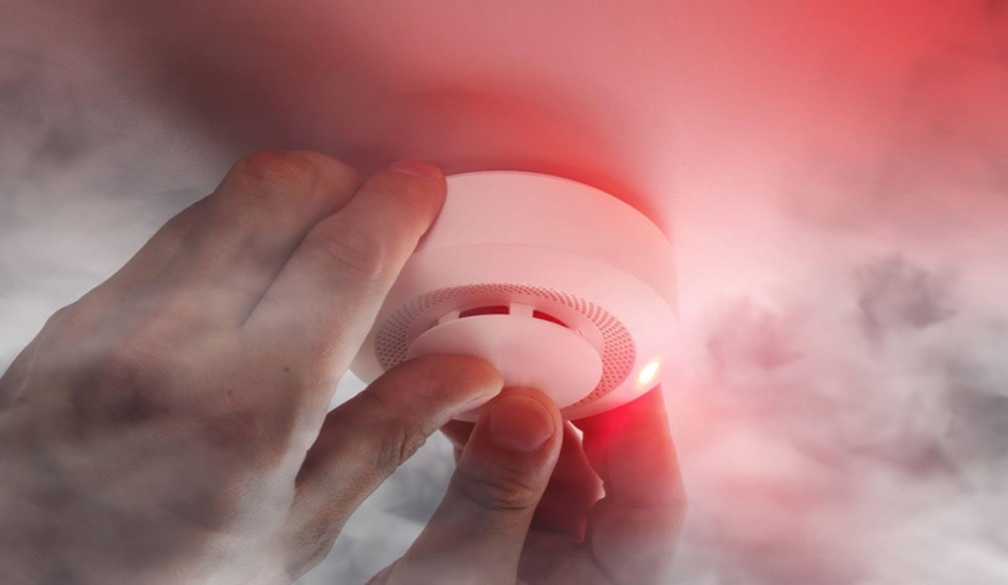Fire Safety Reality Check: Is Your Family Really Protected?

Complete Home Fire Safety Guide: Protecting Your Family Beyond Basic Alarms
Home fire safety extends far beyond installing a single smoke detector. While smoke alarms are absolutely essential and save countless lives each year, comprehensive fire protection requires a multi-layered approach.
Fires can spread with frightening speed, often giving families just minutes or even seconds to respond safely. This guide explores how to create a thorough fire safety strategy including smoke alarm installation, that truly protects your home and loved ones.
Understanding Modern Smoke Alarm Requirements
Fire safety regulations have evolved significantly in recent years, with many regions implementing stricter requirements for residential properties. Modern fire safety standards typically require photoelectric smoke alarms that are interconnected throughout the home, ensuring that when one alarm detects smoke, all alarms sound simultaneously.
These advanced systems are designed to be installed in bedrooms, hallways, and on every level of multi-story homes. The interconnected feature provides crucial extra warning time, as occupants are alerted regardless of where the fire starts.
If your home still relies on older, standalone battery-operated alarms, upgrading to a compliant interconnected system should be a top priority.
Professional installation ensures proper placement, correct wiring, and compliance with local building codes and fire safety regulations.
Why Comprehensive Fire Safety Matters
Smoke alarms serve as your first line of defence, but they cannot prevent fires from starting or guarantee safe evacuation. Fires can originate from various sources, including electrical faults, kitchen accidents, or external threats, and each scenario may require different response strategies.
Effective fire safety involves having multiple protective layers: early detection systems, prevention measures, emergency response plans, and proper safety equipment.
This comprehensive approach significantly improves your family's chances of surviving a fire emergency unharmed.
Developing Your Family Emergency Escape Plan
Creating and practising a detailed escape plan is one of the most critical yet overlooked aspects of home fire safety. Every household member, including children, should know exactly how to respond when an alarm sounds.
Planning Your Escape Routes Identify two different escape routes from every room in your home, as primary exits may become blocked by flames or smoke. Map out these routes and ensure everyone understands them clearly.
Choose an outdoor meeting location that's a safe distance from your house, such as a mailbox, lamppost, or neighbour's driveway.
Regular Practice Sessions Conduct fire drills at various times, including during sleeping hours when visibility and reaction times may be impaired.
Practice staying low to avoid smoke inhalation, checking doors for heat before opening them, and never returning inside for possessions or pets once you've escaped.
Make these drills routine but not frightening, especially for younger children. The goal is building confidence and muscle memory that will serve your family well in an actual emergency.
Essential Firefighting Equipment for Every Home
Early intervention can sometimes prevent minor incidents from becoming major disasters. Every home should be equipped with appropriate firefighting tools, and family members should know how to use them safely.
Fire Extinguishers Install at least one multi-purpose dry powder fire extinguisher in your home, ideally located in high-risk areas like the kitchen and garage. These versatile extinguishers can handle electrical fires, cooking fires, and flammable liquid fires. Ensure all household members know the extinguisher's location and understand basic operation principles.
Fire Blankets Fire blankets are particularly valuable in kitchens where grease and oil fires occur. Unlike water, which can spread burning oil and create dangerous situations, fire blankets will actually smother flames safely and effectively. Keep these blankets easily accessible near cooking areas and make sure everyone knows how to deploy them properly.
Consider attending a local fire safety workshop or watching instructional videos to familiarise your family with proper firefighting techniques.
Electrical Safety: Preventing Hidden Fire Hazards
Electrical problems cause a significant percentage of residential fires, often developing silently over time before creating dangerous situations. Many electrical fire risks remain hidden within walls or electrical panels until they cause serious problems.
Common Electrical Fire Risks Outdated electrical systems, overloaded circuits, damaged wiring, and aging appliances all pose fire hazards. Frequent circuit breaker trips, flickering lights, burning smells, or warm outlet covers may indicate developing electrical problems that require professional attention.
Preventive Measures Schedule regular electrical safety inspections every 5-10 years or more frequently in older homes. Upgrade outdated electrical panels to include modern safety switches and circuit protection. Avoid daisy-chaining power strips or overloading outlets with multiple high-draw appliances.
Replace any electrical cords showing signs of damage, and never run extension cords under carpets or through doorways where they may be damaged. When in doubt about electrical safety, consult with licensed electrical professionals who can identify and address potential hazards.
Seasonal Fire Safety Considerations
Different seasons bring varying fire risks that require specific preparation strategies. Understanding and preparing for any seasonal hazards helps to maintain your year-round fire safety.
Dry Season Preparedness During hot, dry periods, wildfire risks increase significantly, particularly for homes near wooded areas or grasslands. Maintain defensible space around your property by clearing gutters of debris, trimming overhanging branches, and removing flammable materials like woodpiles from near your home's exterior.
Ensure outdoor water sources are accessible and functional, including garden hoses that can reach all sides of your property. If you have a pool, pond, or water storage tanks, consider how they might be utilised in emergency situations.
Year-Round Vigilance Regardless of season, maintain good housekeeping practices that reduce fire risks. Keep escape routes clear of clutter, properly dispose of oily rags and chemicals, and ensure heating equipment is properly maintained and ventilated.
Teaching Children About Fire Safety
Children must be active participants in family fire safety planning, not passive recipients of instructions. Age-appropriate education helps children respond appropriately during emergencies while building confidence rather than fear.
Key Skills for Children
Teach children to recognise smoke alarm sounds and understand they indicate immediate danger requiring quick action. Show them how to crawl low under smoke, use designated escape routes, and locate your family meeting spot. Older children should learn to call emergency services and provide their home address clearly.
Making Safety Education Engaging
Use storybooks, educational videos, and hands-on practice to make fire safety learning engaging and memorable.
Keep conversations calm and factual, focusing on empowerment rather than fear.
Regular, brief practice sessions work better than infrequent, lengthy training sessions.
Praise children for remembering safety procedures and participating in drills, reinforcing the importance of fire safety as a normal part of family life.
Professional Fire Safety Services
While homeowners can implement many fire safety measures independently, certain aspects require professional expertise to ensure effectiveness and compliance with local regulations.
Professional fire safety services include proper smoke alarm installation, electrical safety inspections, and comprehensive fire risk assessments. Licensed professionals understand current building codes, can identify hidden hazards, and recommend appropriate solutions for your specific situation.
When selecting fire safety professionals, make sure you verify their licensing and insurance, check their references, and ensure that they stay current with evolving safety standards and regulations.
Taking Action: Your Next Steps
Fire safety is an ongoing commitment that requires your regular attention and updates as your family's needs change. Start by assessing your current fire safety measures and identifying areas for improvement.
Priority actions can typically include upgrading to compliant smoke alarm systems, creating and practising family escape plans, equipping your home with appropriate firefighting tools, and addressing any known electrical hazards.
Don't delay implementing these fire safety improvements. The time to prepare for emergencies is before they occur when you can make thoughtful decisions and ensure proper installation and training.
Remember that comprehensive fire safety combines prevention, early detection, proper equipment, emergency planning, and regular maintenance. By addressing all these elements, you create multiple layers of protection that significantly improve your family's safety and peace of mind.













